Premium Only Content

Inside CIA Operations: Nicaragua, Grenada, and John Stockwell's Insights (1984)
More CIA stories from John Stockwell: https://thememoryhole.substack.com/
Former CIA official John Stockwell delves into the covert operations and political machinations of the United States in Nicaragua and Grenada. Drawing from personal experiences and intimate knowledge of CIA workings, Stockwell draws parallels between his involvement in Angola and the agency's activities in these Central American nations.
In this revealing discourse recorded in April 1984, Stockwell dissects the US intervention in Nicaragua, offering a critical analysis of the events in Grenada, including the coup and subsequent invasion. With an insider's perspective, he scrutinizes Reagan's justifications for the invasion and dissects media coverage while shedding light on the historical context of American interference in Grenada.
Drawing on his connections with key figures in Grenada's government, Stockwell unpicks the intricacies of destabilization efforts, including CIA-backed terrorist attacks and economic manipulation. By juxtaposing Nicaragua's situation with Grenada's, he offers a comparative analysis, connecting the dots between Reagan's foreign policy and CIA operations.
Stockwell's insights, gained from direct interactions with Nicaraguan leaders and his comprehensive understanding of historical contexts, provide a thought-provoking examination of US foreign policy in the 1980s, exposing the covert actions and their repercussions in these nations.
Since the 19th century, the United States government has participated and interfered, both overtly and covertly, in the replacement of many foreign governments. In the latter half of the 19th century, the U.S. government initiated actions for regime change mainly in Latin America and the southwest Pacific, including the Spanish–American and Philippine–American wars. At the onset of the 20th century, the United States shaped or installed governments in many countries around the world, including neighbors Hawaii, Panama, Honduras, Nicaragua, Mexico, Haiti, and the Dominican Republic.
During World War II, the United States helped overthrow many Nazi German or Imperial Japanese puppet regimes. Examples include regimes in the Philippines, Korea, East China, and parts of Europe. United States forces, together with the Soviet Union, were also instrumental in removing Adolf Hitler from power in Germany and Benito Mussolini in Italy.
In the aftermath of World War II, the U.S. government struggled with the Soviet Union for global leadership, influence and security within the context of the Cold War. Under the Truman administration, the U.S. government feared that communism would be spread, sometimes with the assistance of the Soviet Union's own involvement in regime change, and promoted the domino theory, with later presidents following Truman's precedent.[1] Subsequently, the United States expanded the geographic scope of its actions beyond traditional area of operations, Central America and the Caribbean. Significant operations included the United States and United Kingdom-orchestrated 1953 Iranian coup d'état, the 1961 Bay of Pigs Invasion targeting Cuba, and support for the overthrow of Sukarno by General Suharto in Indonesia. In addition, the U.S. has interfered in the national elections of countries, including Italy in 1948,[2] the Philippines in 1953, Japan in the 1950s and 1960s[3][4] Lebanon in 1957,[5] and Russia in 1996.[6] According to one study, the U.S. performed at least 81 overt and covert known interventions in foreign elections during the period 1946–2000.[7] According to another study, the U.S. engaged in 64 covert and six overt attempts at regime change during the Cold War.[1]
Following the dissolution of the Soviet Union, the United States has led or supported wars to determine the governance of a number of countries. Stated U.S. aims in these conflicts have included fighting the War on Terror, as in the Afghan War, or removing weapons of mass destruction (WMDs), as in the Iraq War.
Prior to 1887
1846–1848 Annexation of Texas and invasion of California
Main articles: Mexican–American War and Texas annexation
The United States annexed the Republic of Texas, at the time considered by Mexico to be a rebellious state of Mexico.[8] During the war with Mexico that ensued, the United States seized Alta California from Mexico.[9]
1865–1867: Mexico
See also: Second French intervention in Mexico
While the American Civil War was taking place in the United States, France and other countries invaded Mexico to collect debts. France then installed Habsburg prince Maximilian I as the Emperor of Mexico. After the Civil war ended, the United States began supporting the Liberal forces of Benito Juárez (who had been the interim President of Mexico since 1858 under the liberal Constitution of 1857 and then elected as president in 1861 before the French invasion) against the forces of Maximilian. The United States began sending and dropping arms into Mexico and many Americans fought alongside Juarez. Eventually, Juarez and the Liberals took back power and executed Maximillian I.[10][11][12] The United States opposed Maximilian and had invoked the Monroe Doctrine. William Seward said afterwards "The Monroe Doctrine, which eight years ago was merely a theory, is now an irreversible fact."[13]
1887–1912: U.S. expansionism and Roosevelt administration
1880s
1887–1889: Samoa
Main articles: Samoan Civil War, Samoan crisis, and Second Samoan Civil War
Samoa in Oceania
In the 1880s, Samoa was a monarchy with two rival claimants to the throne: Malietoa Laupepa and Mata'afa Iosefo. The Samoan crisis was a confrontation between the United States, Germany and the United Kingdom from 1887 to 1889, with the powers backing rival claimants to the throne of the Samoan Islands which became the First Samoan Civil War.[14]
1890s
1893: Kingdom of Hawaii
Main articles: Overthrow of the Hawaiian Kingdom and Republic of Hawaii
Hawaii in Oceania
Anti-monarchs, mostly Americans, in Hawaii, engineered the overthrow of the Kingdom of Hawaii. On January 17, 1893, the native monarch, Queen Lili'uokalani, was overthrown. Hawaii was initially reconstituted as an independent republic, but the ultimate goal of the action was the annexation of the islands to the United States, which was finally accomplished with the Newlands Resolution of 1898.[15]
1899–1901: Boxer Rebellion
[icon]
This section needs expansion with: the Boxer Rebellion. You can help by adding to it. (March 2021)
1899–1902: Philippines
Main article: History of the Philippines (1898–1946)
The successful Philippine Revolution saw the defeat of the Spanish Empire and the establishment of the First Philippine Republic, ending centuries of Spanish colonial rule in the archipelago. The U.S., which had allied with the revolutionaries and emerged victorious in the concurrent Spanish–American War, was "granted" the Philippines in the Treaty of Paris. Wishing to establish its own control over the country, the U.S. engaged in the Philippine–American War, the success of which saw the dissolution of the self-governing Philippine Republic and formation of an Insular Government of the Philippine Islands in 1902. The Philippines became a self-governing Commonwealth in 1935 and was granted full sovereignty by 1946.
1900s
1903–1925: Honduras
Main article: Banana Wars
In what became known as the "Banana Wars," between the end of the Spanish–American War in 1898 and the inception of the Good Neighbor Policy in 1934, the U.S. staged many military invasions and interventions in Central America and the Caribbean.[16] One of these incursions, in 1903, involved regime change rather than regime preservation. The United States Marine Corps, which most often fought these wars, developed a manual called The Strategy and Tactics of Small Wars in 1921 based on its experiences. On occasion, the Navy provided gunfire support and Army troops were also used. The United Fruit Company and Standard Fruit Company dominated Honduras' key banana export sector and associated land holdings and railways. The U.S. staged invasions and incursions of US troops in 1903 (supporting a coup by Manuel Bonilla), 1907 (supporting Bonilla against a Nicaraguan-backed coup), 1911 and 1912 (defending the regime of Miguel R. Davila from an uprising), 1919 (peacekeeping during a civil war, and installing the caretaker government of Francisco Bográn), 1920 (defending the Bográn regime from a general strike), 1924 (defending the regime of Rafael López Gutiérrez from an uprising) and 1925 (defending the elected government of Miguel Paz Barahona) to defend US interests.[17]
1906–1909: Cuba
Main article: Second Occupation of Cuba
After the explosion of the USS Maine the United States declared war on Spain, starting the Spanish–American War.[18] The United States invaded and occupied Spanish-ruled Cuba in 1898. Many in the United States did not want to annex Cuba and passed the Teller Amendment, forbidding annexation. Cuba was occupied by the U.S. and run by military governor Leonard Wood during the first occupation from 1898 to 1902, after the end of the war. The Platt Amendment was passed later on outlining U.S. Cuban relations. It said the U.S. could intervene anytime against a government that was not approved, forced Cuba to accept U.S. influence, and limited Cuban abilities to make foreign relations.[19] The United States forced Cuba to accept the terms of the Platt Amendment, by putting it into their constitution.[20] After the occupation, Cuba and the U.S. would sign the Cuban–American Treaty of Relations in 1903, further agreeing to the terms of the Platt Amendment.[21]
Tomás Estrada Palma became the first President of Cuba after the U.S. withdrew. He was a member of the Republican Party of Havana. He was re-elected in 1905 unopposed; however, the Liberals accused him of electoral fraud. Fighting began between the Liberals and Republicans. Due to the tensions he resigned on September 28, 1906, and his government collapsed soon afterwards. U.S. Secretary of State William Howard Taft invoked the Platt Amendment and the 1903 treaty, under approval of President Theodore Roosevelt, invading the country, and occupying it. The country would be governed by Charles Edward Magoon during the occupation. They oversaw the election of José Miguel Gómez in 1909, and afterwards withdrew from the country.[22]
1909–1910: Nicaragua
See also: United States occupation of Nicaragua
Governor Juan José Estrada, member of the Conservative Party, led a revolt against President José Santos Zelaya, member of the Liberal Party reelected in 1906. This became what is known as the Estrada rebellion. The United States supported the conservative forces because Zelaya had wanted to work with Germany or Japan to build a new canal through the country. The U.S. controlled the Panama Canal and did not want competition from another country outside of the Americas. Thomas P Moffat, a US council[23] in Bluefields, Nicaragua would give overt support, in conflict with the US trying to only give covert support. Direct intervention would be pushed by the secretary of state Philander C. Knox. Two Americans were executed by Zelaya for their participation with the conservatives. Seeing an opportunity the United States became directly involved in the rebellion and sent in troops, which landed on the Mosquito Coast. On December 14, 1909 Zelaya was forced to resign under diplomatic pressure from America and fled Nicaragua. Before Zelaya fled, he along with the liberal assembly choose José Madriz to lead Nicaragua. The U.S. refused to recognize Madriz. The conservatives eventually beat back the liberals and forced Madriz to resign. Estrada then became the president. Thomas Cleland Dawson was sent as a special agent to the country and determined that any election held would bring the liberals into power, so had Estrada set up a constituent assembly to elect him instead. In August 1910 Estrada became President of Nicaragua under U.S. recognition, agreeing to certain conditions from the U.S. After the intervention, the U.S. and Nicaragua signed a treaty on June 6, 1911.[24][25][26]
1912–1941: Wilson administration, World War I and interwar period
1910s
1912–1933: Nicaragua
See also: United States occupation of Nicaragua
The Taft administration sent troops into Nicaragua and occupied the country. When the Wilson administration came into power, they extended the stay and took complete financial and governmental control of the country, leaving a heavily armed legation. U.S. president Calvin Coolidge removed troops from the country, leaving a legation and Adolfo Diaz in charge of the country. Rebels ended up capturing the town with the legation and Diaz requested troops came back, which they did a few months after leaving. The U.S. government fought against rebels led by Augusto Cesar Sandino. Franklin D. Roosevelt pulled out because the U.S. could no longer afford to keep troops in the country due to the Great Depression. The second intervention in Nicaragua would become one of the longest wars in United States history. The United States left the Somoza family in charge, who killed Sandino in 1934.[27]
1915–1934: Haiti
Main article: United States occupation of Haiti
The U.S. occupied Haiti from 1915 to 1934. U.S.-based banks had lent money to Haiti and the banks requested U.S. government intervention. In an example of "gunboat diplomacy," the U.S. sent its navy to intimidate to get its way.[28] Eventually, in 1917, the U.S. installed a new government and dictated the terms of a new Haitian constitution of 1917 that instituted changes that included an end to the prior ban on land ownership by non-Haitians. The Cacos were originally armed militias of formerly enslaved persons who rebelled and took control of mountainous areas following the Haitian Revolution in 1804. Such groups fought a guerrilla war against the U.S. occupation in what were known as the "Caco Wars."[29]
1916–1924: Dominican Republic
Main article: United States occupation of the Dominican Republic (1916–1924)
U.S. marines invaded the Dominican Republic and occupied it from 1916 to 1924, and this was preceded by US military interventions in 1903, 1904, and 1914. The US Navy installed its personnel in all key positions in government and controlled the Dominican military and police.[30] Within a couple of days, President Juan Isidro Jimenes resigned.[31]
World War I
Main article: United States in World War I
1917–1919: Germany
After the release of the Zimmermann Telegram the United States joined the First World War on April 6, 1917, declaring war on the German Empire, a monarchy.[32] The Wilson Administration made abdication of the Kaiser and the creation of a German Republic a requirement of surrender. Woodrow Wilson had made U.S. policy to "Make the World Safe for Democracy". Germany surrendered November 11, 1918.[33] Kaiser Wilhelm II abdicated on November 28, 1918.[34] While the United States did not ratify it, the Treaty of Versailles in 1919 had much input from the United States. It mandated for Kaiser Wilhelm II to be removed from the government and tried, though the second part was never carried out.[35] Germany would then become the Weimar Republic, a liberal democracy. The United States signed the U.S.-German peace Treaty in 1921, solidifying the agreements made previously to the rest of the Entente with the U.S.[36]
1917–1920: Austria-Hungary
On December 7, 1917, the United States declared war on Austria-Hungary, a monarchy, as part of World War I.[37] Austria-Hungary surrendered on November 3, 1918.[38] Austria became a republic and signed Treaty of Saint Germain in 1919 effectively dissolving Austria-Hungary.[39] The Treaty disallowed Austria to ever unite with Germany. Even though the United States had much effect on the treaty it did not ratify it and instead signed the U.S.-Austrian Peace Treaty in 1921, solidifying their new borders and government to the United States.[40] After brief civil strife, the Kingdom of Hungary became a monarchy without a monarch, instead governed by Miklós Horthy as Regent. Hungary signed the Treaty of Trianon, in 1920 with the Entente, without the United States.[41] They signed the U.S.-Hungarian Peace Treaty in 1921 solidifying their status and borders with the United States.[42]
1918–1920: Russia
Main article: Allied intervention in the Russian Civil War
In 1918 the U.S. military took part in the Allied intervention in the Russian Civil War to support White movement and overthrow the Bolsheviks.[43] President Wilson agreed to send 5,000 United States Army troops in the campaign. This force, which became known as the "American North Russia Expeditionary Force"[44] (a.k.a. the Polar Bear Expedition) launched the North Russia Campaign from Arkhangelsk, while another 8,000 soldiers, organised as the American Expeditionary Force Siberia,[45] launched the Siberia intervention from Vladivostok.[46] The forces were withdrawn in 1920.[47]
1941–1945: World War II and aftermath
Main article: Military history of the United States during World War II
1941–1952: Japan
Main article: Occupation of Japan
Representatives of the Empire of Japan stand aboard USS Missouri prior to signing of the Instrument of Surrender
In December 1941, the US joined the Allies in war against the Empire of Japan, a monarchy. After the Allied victory, Japan was occupied by Allied forces under the command of American general Douglas MacArthur. In 1946, the Japanese Diet ratified a new Constitution of Japan that followed closely a 'model copy' prepared by MacArthur's command,[48] and was promulgated as an amendment to the old Prussian-style Meiji Constitution. The constitution renounced aggressive war and was accompanied by liberalization of many areas of Japanese life. While liberalizing life for most Japanese, the Allies tried many Japanese war criminals and executed some, while granting amnesty to the family of Emperor Hirohito.[49] The occupation was ended by the Treaty of San Francisco.[49]
Following the United States invasion of Okinawa during the Pacific War, the U.S. installed the United States Military Government of the Ryukyu Islands. Pursuant to a treaty with the Japanese government (Message of Emperor), in 1950 the United States Civil Administration of the Ryukyu Islands took over and ruled Okinawa and the rest of the Ryukyu Islands until 1972. During this "trusteeship rule," the U.S. built numerous military bases, including bases that operated nuclear weapons. U.S. rule was opposed by many local residents, creating the Ryukyu independence movement that struggled against U.S. rule.[50]
1941–1949: Germany
Main articles: Western Allied invasion of Germany and Allied-occupied Germany
In December 1941, the United States joined the Allied campaign against Nazi Germany, a fascist dictatorship. The US took part in the Allied occupation and Denazification of the Western portion of Germany. Former Nazis were subjected to varying levels of punishment, depending on how the US assessed their levels of guilt. US general Dwight D. Eisenhower initially estimated that the process would take 50 years.[51] Depending on a former Nazi's level of culpability, punishments could range from a fine (for those judged least culpable), to denial of permission to work as anything but a manual laborer, to imprisonment and even death for the most severe offenders, such as those convicted in the Nuremberg Trials. At the end of 1947, for example, the Allies held 90,000 Nazis in detention; another 1,900,000 were forbidden to work as anything but manual laborers.[52]
As Germans took more and more responsibility for Germany, they pushed for an end to the denazification process, and the Americans allowed this. In 1949, an independent liberal democracy, the Federal Republic of Germany, also known as West Germany, was formed and took responsibility for denazification. For most former Nazis, the process came to an end with amnesty laws passed in 1951.[53] The ultimate outcome of denazification was the creation of a parliamentary democracy in West Germany.[54]
1941–1946: Italy
Main articles: Italian Civil War and Liberation of Italy
In July–August 1943, the US participated in the Allied invasion of Sicily, spearheaded by the U.S. Seventh Army, under Lieutenant General George S. Patton, in which over 2000 US servicemen were killed,[55] initiating the Italian Campaign which conquered Italy from the fascist regime of Benito Mussolini and its Nazi German allies. Mussolini was arrested by order of King Victor Emmanuel III, provoking a civil war. The king appointed Pietro Badoglio as new Prime Minister. Badoglio stripped away the final elements of Fascist rule by banning the National Fascist Party, then signed an armistice with the Allied armed forces. The Royal Italian Army outside of the peninsula itself collapsed, its occupied and annexed territories fell under German control. Italy capitulated to the Allies on 3 September 1943. The northern half of the country was occupied by the Germans with help from Italian fascists and made a collaborationist puppet state, while the south was governed by monarchist forces, which fought for the Allied cause as the Italian Co-Belligerent Army.[56]
1944–1946: France
Main articles: Liberation of France, Operation Goodwood, and Operation Cobra
General Charles de Gaulle and his entourage proudly stroll down the Champs-Élysées to Notre-Dame Cathedral for a Te Deum ceremony following Paris's liberation on 25 August 1944.
British, Canadian and United States forces were critical participants in Operation Goodwood and Operation Cobra, leading to a military breakout that ended the Nazi occupation of France. The actual Liberation of Paris was accomplished by French forces. The French formed the Provisional Government of the French Republic in 1944, leading to the formation of the French Fourth Republic in 1946.[citation needed]
The liberation of France is celebrated regularly up to the present day.[57][58]
See also: Free France § Liberation of France
1944–1945: Belgium
Main article: Liberation of Belgium
American troops during the Battle of the Bulge
In the wake of the 1940 invasion, Germany established the Reichskommissariat of Belgium and Northern France to govern Belgium. United States, Canadian, British, and other Allied forces ended the Nazi occupation of most of Belgium in September 1944. The Belgian Government in Exile under Prime Minister Hubert Pierlot returned on 8 September.[59]
In December, American forces suffered over 80,000 casualties defending Belgium from a German counterattack in the Battle of the Bulge. By February 1945, all of Belgium was in Allied hands.[60]
The year 1945 was chaotic. Pierlot resigned, and Achille Van Acker of the Belgian Socialist Party formed a new government. There were riots over the Royal Question—the return of King Leopold III. Although the war continued, Belgians were again in control of their own country.[61]
1944–1945: Netherlands
Main articles: Operation Market Garden and Operation Plunder
During the Nazi occupation, the Netherlands was governed by the Reichskommissariat Niederlande, headed by Arthur Seyss-Inquart. British, Canadian, and American forces liberated portions of the Netherlands in September 1944. However, after the failure of Operation Market Garden, the liberation of the largest cities had to wait until the last weeks of the European theatre of World War II. The occupied portions of the Netherlands suffered a famine that winter. British and American forces crossed the Rhine on 23 March 1945; Canadian forces in their wake then entered the Netherlands from the east. The remaining German forces in the Netherlands surrendered on 5 May, which is celebrated as Liberation Day in the Netherlands. Queen Wilhelmina returned on 2 May; elections were held in 1946, leading to a new government headed by Prime Minister Louis Beel.[62][63]
1944–1945: Philippines
Main articles: Philippines Campaign (1944–1945) and Commonwealth of the Philippines
General Douglas MacArthur, President Osmeña and staff land at Palo, Leyte on October 20, 1944
United States landings in 1944 ended the Japanese occupation of the Philippines.[64] After the Japanese were defeated and the puppet regime that was controlling the Second Philippine Republic was overthrown, the United States fulfilled a promise by granting independence to the Philippines. Sergio Osmeña formed the government of the restored Commonwealth of the Philippines, overseeing democratic transition to the fully sovereign Third Philippine Republic in 1946.[65]
1945–1955: Austria
Main article: Allied-occupied Austria
Austria was annexed to Germany in the 1938 Anschluss. As German citizens, many Austrians fought on the side of Germany during World War II. After the Allied victory, the Allies treated Austria as a victim of Nazi aggression, rather than as a perpetrator. The United States Marshall Plan provided aid.[66]
The 1955 Austrian State Treaty re-established Austria as a free, democratic, and sovereign state. It was signed by representatives of the United States, the Soviet Union, the United Kingdom, and France. It provided for the withdrawal of all occupying troops and guaranteed Austrian neutrality in the Cold War.[67]
1945–1991: Cold War
1940s
1945–1948: South Korea
Main articles: United States Army Military Government in Korea, First Republic of Korea, and Syngman Rhee
The Empire of Japan surrendered to the United States in August 1945, ending the Japanese rule of Korea. Under the leadership of Lyuh Woon-Hyung People's Committees throughout Korea formed to coordinate transition to Korean independence. On August 28, 1945 these committees formed the temporary national government of Korea, naming it the People's Republic of Korea (PRK) a couple of weeks later.[68][69] On September 8, 1945, the United States government landed forces in Korea and thereafter established the United States Army Military Government in Korea (USAMGK) to govern Korea south of the 38th parallel. The USAMGK outlawed the PRK government.[70][71]
In May 1948, Syngman Rhee, who had previously lived in the United States, won the 1948 South Korean presidential election, which had been boycotted by most other politicians and in which voting was limited to property owners and tax payers or, in smaller towns, to town elders voting for everyone else.[72][73] Syngman Rhee, backed by the U.S. government, set up authoritarian rule that coordinated closely with the business sector and lasted until Rhee's overthrow in 1961, which led to a similarly authoritarian regime that would last ultimately until the late 1980s.[74]
1947–1949: Greece
Main article: Greek Civil War
Greece had been under Axis occupation since 1941. Its government-in-exile, unelected and loyal to King George II, was based in Cairo. By the Summer of 1944, communist guerrillas, then known as the Greek People's Liberation Army (ELAS), who had been armed by the Western powers, exploiting the gradual collapse of the Axis, claimed to have liberated nearly all of Greece outside of Athens from Axis occupation, while also attacking and defeating rival non-Communist partisan groups, forming a rival unelected government, the Political Committee of National Liberation. On 12 August 1944, German forces retreated from the Athens area two days ahead of British landings there, ending the occupation.[75]
The British Armed Forces together with Greek forces under control of the Greek government (now a government of national unity led by Konstantinos Tsaldaris, elected in the 1946 Greek legislative election boycotted by the Communist Party of Greece) then fought for control of the country in the Greek Civil War against the communists, who at that time were self-proclaimed as the Democratic Army of Greece (DSE). By early 1947, the British government could no longer afford the huge cost of financing the war against DSE, and pursuant to the October 1944 Percentages Agreement between Winston Churchill and Joseph Stalin, Greece was to remain part of the Western sphere of influence. Accordingly, the British requested the US government to step in and the U.S. flooded the country with military equipment, military advisers and weapons.[76]: 553–554 [77]: 129 [78][79] With increased U.S. military aid, by September 1949 the government eventually won, fully restoring the Kingdom of Greece.[80]: 616–617
1948: Costa Rica
Main article: Costa Rican Civil War
Christian socialist medic Rafael Ángel Calderón Guardia of the National Republican Party was elected in 1944, promoting a general social reform and allied to the Costa Rican Communist Party.[81] In the 1948 election, the opposition won the presidency but lost the Congress. This prompted the Congress to annul the results of the presidential election but not the results of the congressional election; on the same day as the annulment, the leader of the opposition campaign was assassinated.[82] These events led to the short-lived Costa Rican Civil War of 1948, in which the US supported the opposition, and Somoza-ran Nicaragua supported Calderón. The war ended Calderón's government and led to the short de facto rule of 18 months by José Figueres Ferrer.[81] However, Figueres also held some left-leaning ideas and continued the process of social reform.[83] After the war, democracy was quickly restored and a two-party system encompassed by the parties of the Calderonistas and Figueristas developed in the country for nearly 60 years.[83]
1949–1953: Albania
See also: Albanian Subversion
Albania was in chaos after World War II and the country was not as focused on peacetime conferences in comparison to other European nations, while having suffered high casualties.[84] It was threatened by its larger neighbors with annexation. After Yugoslavia dropped out of the Eastern Bloc, the small country of Albania was geographically isolated from the rest of the Eastern Bloc.[citation needed] The United States and United Kingdom took advantage of the situation and recruited anti-communist Albanians who had fled after the USSR invaded. The US and UK formed the Free Albania National Committee, made up of many of the emigres. Recruited Albanians were trained by the U.S. and U.K. and infiltrated the country multiple times. Eventually, the operation was found out and many of the agents fled, were executed, or were tried. The operation would become a failure. The operation was declassified in 2006, due to the Nazi War Crimes Disclosure Act and is now available in the National Archives.[85][86]
1949: Syria
Main article: March 1949 Syrian coup d'état
The government of Shukri al-Quwatli, reelected in 1948, was overthrown by a junta led by the Syrian Army chief of staff at the time, Husni al-Za'im, who became President of Syria on April 11, 1949. Za'im had extensive connections to CIA operatives,[87] although the exact nature of U.S. involvement in the coup remains highly controversial.[88][89][90] The construction of the Trans-Arabian Pipeline, which had been held up in the Syrian parliament, was approved by Za'im, the new president, just over a month after the coup.[91]
1950s
1950–1953: Burma and China
See also: Kuomintang in Burma § CIA connection and opium trade
The Chinese Civil War had recently ended, with the communists winning and the nationalists losing. The nationalists retreated to areas such as Taiwan and north Burma.[92]
Operation Paper began in late 1950[93] or early 1951 following Chinese involvement in the Korean War.[94]
Operation Paper entailed CIA plans used by CIA military advisors on the ground in Burma to assist Kuomintang incursions into Western China over several years, under the command of General Li Mi, with Kuomintang leadership hoping to eventually retake China, despite opposition from the US State Department.[95] However, each attempted invasion was repelled by the Chinese army. The Kuomintang took control of large swaths of Burma, while the government of Burma complained repeatedly of the military invasion to the United Nations.[96]
On secret flights from Thailand to Burma, CAT aircraft flown by pilots hired by the CIA brought American weapons and other supplies to the Kuomintang and on return flights the CAT aircraft transported opium from the Kuomintang to Chinese organized crime drug traffickers in Bangkok, Thailand.[96][97]
1952: Egypt
Main articles: Egyptian revolution of 1952 and Project FF
In February 1952, following January's riots in Cairo amid widespread nationalist discontent over the continued British occupation of the Suez Canal and Egypt's defeat in the 1948 Arab–Israeli War, CIA officer Kermit Roosevelt Jr. was dispatched by the State Department to meet with Farouk I of the Kingdom of Egypt. American policy at that time was to convince Farouk to introduce reforms that would weaken the appeal of Egyptian radicals and stabilize Farouk's grip on power. The U.S. was notified in advance of the successful July coup led by nationalist and anti-communist Egyptian military officers (the "Free Officers") that replaced the Egyptian monarchy with the Republic of Egypt under the leadership of Mohamed Naguib and Gamal Abdel Nasser. CIA officer Miles Copeland Jr. recounted in his memoirs that Roosevelt helped coordinate the coup during three prior meetings with the plotters (including Nasser, the future Egyptian president); this has not been confirmed by declassified documents but is partially supported by circumstantial evidence. Roosevelt and several of the Egyptians said to have been present in these meetings denied Copeland's account; another U.S. official, William Lakeland, said its veracity is open to question. Hugh Wilford notes that "whether or not the CIA dealt directly with the Free Officers prior to their July 1952 coup, there was extensive secret American-Egyptian contact in the months after the revolution."[98][99]
1952: Guatemala
Main article: Operation PBFortune
Operation PBFortune, also known as Operation Fortune, was a covert United States operation to overthrow Guatemalan President Jacobo Árbenz in 1952. The operation was authorized by U.S. President Harry Truman and planned by the Central Intelligence Agency. The plan involved providing weapons to the exiled Guatemalan military officer Carlos Castillo Armas, who was to lead an invasion from Nicaragua.[100]
1952–1953: Iran
Main article: 1953 Iranian coup d'état
Since 1944, Iran was a constitutional monarchy ruled by the Shah Mohammad Reza Pahlavi. From the discovery of oil in Iran in the late nineteenth century major powers exploited the weakness of the Iranian government to obtain concessions that many believed failed to give Iran a fair share of the profits. During World War II, the UK, the USSR and the US all became involved in Iranian affairs, including the joint Anglo-Soviet invasion of Iran in 1941. Iranian officials began to notice that British taxes were increasing while royalties to Iran declined. By 1948, Britain received substantially more revenue from the Anglo-Iranian Oil Company (AIOC) than Iran. Negotiations to meet this and other Iranian concerns exacerbated rather than eased tensions.[101]
On March 15, 1951 the Majlis, the Iranian parliament, passed legislation championed by reformist politician Mohammad Mosaddegh to nationalize the AIOC. The senate approved the measure two days later. Fifteen months later, Mosadegh was elected Prime Minister by the Majlis. International business concerns then boycotted oil from the nationalized Iranian oil industry. This contributed to concerns in Britain and the US that Mosadegh might be a communist. He was reportedly supported by the Communist Tudeh Party.[102][103]
The CIA began supporting 18 of their favorite candidates in the 1952 Iranian legislative election, which Mosaddegh suspended after urban deputies loyal to him were elected.[104] The new parliament gave Mosaddegh emergency powers which weakened the power of the Shah, and there was a constitutional struggle over the roles of the Shah and prime minister. Britain strongly backed the Shah, while the US officially remained neutral. However, America's position shifted in late 1952 with the election of Dwight D. Eisenhower as U.S. president. The CIA launched Operation Ajax, directed by Kermit Roosevelt Jr., with help from Norman Darbyshire, to remove Mosaddegh by persuading the Shah to replace him, using diplomacy and bribery. The 1953 Iranian coup d'état (known in Iran as the "28 Mordad coup")[105] was orchestrated by the intelligence agencies of the United Kingdom such as MI6 (under the name "Operation Boot") and the United States (under the name "TPAJAX Project").[106][107][108][109]
The coup saw the transition of Pahlavi from a constitutional monarch to an authoritarian, who relied heavily on United States government support. That support dissipated during the Iranian Revolution of 1979, as his own security forces refused to shoot into non-violent crowds.[110] The CIA did not admit its responsibility until the 60th anniversary of the coup in August 2013.[111]
1954: Guatemala
Main article: 1954 Guatemalan coup d'état
See also: Guatemalan Civil War
In a 1954 CIA operation code named Operation PBSuccess, the U.S. government executed a coup that successfully overthrew the government of President Jacobo Árbenz, elected in 1950, and installed Carlos Castillo Armas, the first of a line of right-wing dictators, in its place.[112][113][114] Not only was it done for the ideological purpose of containment, but the CIA had been approached by the United Fruit Company as it saw possible loss in profits due to the situation of workers in the country, i.e. the introduction of anti-exploitation laws.[115] The perceived success of the operation made it a model for future CIA operations because the CIA lied to the president of the United States when briefing him regarding the number of casualties.[116][117]
1956–1957: Syria
See also: CIA activities in Syria
In 1956 Operation Straggle was a failed coup plot against Nasserist civilian politician Sabri al-Asali. The CIA made plans for a coup for late October 1956 to topple the Syrian government. The plan entailed takeover by the Syrian military of key cities and border crossings.[118][119][120] The plan was postponed when Israel invaded Egypt in October 1956 and US planners thought their operation would be unsuccessful at a time when the Arab world is fighting "Israeli aggression." The operation was uncovered and American plotters had to flee the country.[121]
In 1957 Operation Wappen was a second coup plan against Syria, orchestrated by the CIA's Kermit Roosevelt Jr.. It called for assassination of key senior Syrian officials, staged military incidents on the Syrian border to be blamed on Syria and then to be used as pretext for invasion by Iraqi and Jordanian troops, an intense US propaganda campaign targeting the Syrian population, and "sabotage, national conspiracies and various strong-arm activities" to be blamed on Damascus.[122][123][120][124] This operation failed when Syrian military officers paid off with millions of dollars in bribes to carry out the coup revealed the plot to Syrian intelligence. The U.S. Department of State denied accusation of a coup attempt and along with US media accused Syria of being a "satellite" of the USSR.[123][125][126]
There was also a third plan in 1957, called "The Preferred Plan". Alongside Britain's MI6, the CIA planned to support and arm several uprisings. However, this plan was never carried out.[122]
1957–1959: Indonesia
See also: Permesta and CIA activities in Indonesia
Starting in 1957, Eisenhower ordered the CIA to overthrow Sukarno. The CIA supported the failed Permesta Rebellion by rebel Indonesian military officers in February 1958. CIA pilots, such as Allen Lawrence Pope, piloted planes operated by CIA front organization Civil Air Transport (CAT) that bombed civilian and military targets in Indonesia. The CIA instructed CAT pilots to target commercial shipping in order to frighten foreign merchant ships away from Indonesian waters, thereby weakening the Indonesian economy and thus destabilizing the government of Indonesia. The CIA aerial bombardment resulted in the sinking of several commercial ships[127] and the bombing of a marketplace that killed many civilians.[128] Pope was shot down and captured on 18 May 1958, revealing U.S. involvement, which Eisenhower publicly denied at the time. The rebellion was ultimately defeated by 1961.[129][130]
1959: Iraq
See also: CIA activities in Iraq
Iraq_in_its_region
Concerned about the influence of the Iraqi Communist Party (ICP) in Brigadier Abd al-Karim Qasim's administration, President Eisenhower questioned that "it might be good policy to help [Gamal Abdel Nasser] take over in Iraq," recommending that Nasser be provided with "money and support," thus the U.S. "moved into increasingly close alignment with Egypt with regard to Qasim and Iraq."[131] After Iraq withdrew from the anti-Soviet alliance—the Baghdad Pact—the United States National Security Council (NSC) proposed various contingencies for preventing a communist takeover of the country,[132] and "soon developed a detailed plan for assisting nationalist elements committed to the overthrow of Qasim."[131] The U.S. also "approached Nasser to discuss 'parallel measures' that could be taken by the two countries against Iraq."[133]
During a NSC meeting on September 24, two representatives from the State Department urged a cautious approach, while the other twelve representatives, namely from the CIA and the Department of Defense, "strong[ly] pitch[ed] for a more active policy toward Iraq." One CIA representative noted that there is a "small stockpile [of weapons] in the area," and that the CIA "could support elements in Jordan and the UAR to help Iraqis filter back to Iraq."[133] That same day, the NSC would also prepare a study which called for "covert assistance to Egyptian efforts to topple Qasim," and for "grooming political leadership for a successor government."[131] Bryan R. Gibson writes that "there is no documentation that ties the United States directly to any of Nasser's many covert attempts to overthrow the Qasim regime."[134] However, Brandon Wolfe-Hunnicutt states that the U.S. issued its "tacit support for Egyptian efforts to bring [Qasim's government] down,"[131] and Kenneth Osgood writes that "circumstantial evidence in declassified records suggests that ... [t]he United States was working with Nasser on some level, even if the precise nature of that collaboration is not known."[133] Contemporary documents pertaining to the CIA's operations in Iraq have remained classified or heavily redacted, thus "allow[ing] for plausible deniability."[135]
Richard Sale of United Press International (UPI), citing former U.S. diplomat and intelligence officials, Adel Darwish, and other experts, reported that the unsuccessful October 7, 1959 assassination attempt on Qasim involving a young Saddam Hussein and other Ba'athist conspirators was a collaboration between the CIA and Egyptian intelligence.[136] Gibson has disputed Sale and Darwish's account, concluding that available declassified records show that "while the United States was aware of several plots against Qasim, it had still adhered to [a] nonintervention policy."[137] Wolfe-Hunnicutt observes that "[i]t seems more likely that it was October 7 that brought the Ba'ath to the attention of the US government."[138] On the other hand, Osgood writes that "the circumstantial evidence is such that the possibility of US–UAR collaboration with Ba'ath Party activists cannot be ruled out," concluding that: "Whatever the validity of [Sale's] charges, at the very least currently declassified documents reveal that US officials were actively considering various plots against Qasim and that the CIA was building up assets for covert operations in Iraq."[133]
The assassins, including Saddam, escaped to Cairo, Egypt "where they enjoyed Nasser's protection for the remainder of Qasim's tenure in power."[139] One of the conspirators involved in the assassination attempt, Hazim Jawad, "received training from the UAR intelligence service in clandestine wireless telegraphy," before returning to Iraq in 1960 to coordinate "clandestine radio operations for the UAR." Wolfe-Hunnicutt writes that in the 1959–1960 period, during the "peak of US-UAR intelligence collaboration ... [i]t is quite possible that Jawad became familiar to US intelligence," as a 1963 State Department cable described him as "one of our boys."[140] Similarly, it is possible that Saddam visited the U.S. embassy in Cairo,[141] and some evidence suggests that he was "in frequent contact with US officials and intelligence agents."[133] A former high-ranking U.S. official told Marion Farouk–Sluglett and Peter Sluglett that Iraqi Ba'athists, including Saddam, "had made contact with the American authorities in the late 1950s and early 1960s."[142]
1959–1963: South Vietnam
Main articles: War in Vietnam (1959–1963), 1963 South Vietnamese coup, Arrest and assassination of Ngo Dinh Diem, and Buddhist crisis
See also: 1960 South Vietnamese coup attempt and 1962 South Vietnamese Independence Palace bombing
In 1959 a branch of the Worker's Party of Vietnam was formed in the south of the country and began an insurgency against the Republic of Vietnam.[143] They were supplied through Group 559, which was formed the same year by North Vietnam to send weapons down the Ho Chi Minh Trail.[144][145] The US supported the RoV against the communists. After the 1960 US election, President John F. Kennedy became much more involved with the fight against the insurgency.[146]
Location of South Vietnam
From mid-1963, the Kennedy administration became increasingly frustrated with South Vietnamese President Ngo Dinh Diem's corrupt and repressive rule and his persecution of the Buddhist majority. In light of Diem's refusal to adopt reforms, American officials debated whether they should support efforts to replace him. These debates crystallized after the ARVN Special Forces, which took their orders directly from the palace, raided Buddhist temples across the country, leaving a death toll estimated in the hundreds, and resulted in the dispatch of Cable 243 on August 24, 1963, which instructed United States Ambassador to South Vietnam, Henry Cabot Lodge Jr., to "examine all possible alternative leadership and make detailed plans as to how we might bring about Diem's replacement if this should become necessary". Lodge and his liaison officer, Lucien Conein, contacted discontented Army of the Republic of Vietnam officers and gave assurances that the US would not oppose a coup or respond with aid cuts. These efforts culminated in a coup d'état on November 1–2, 1963, during which Diem and his brother were assassinated.[147] By the end of 1963 the Viet Cong switched to a much more aggressive strategy in fighting the Southern government and the US.
The Pentagon Papers concluded that "Beginning in August of 1963 we variously authorized, sanctioned and encouraged the coup efforts of the Vietnamese generals and offered full support for a successor government. In October we cut off aid to Diem in a direct rebuff, giving a green light to the generals. We maintained clandestine contact with them throughout the planning and execution of the coup and sought to review their operational plans and proposed new government."[148]
1959–1962: Cuba
Main articles: Cuban Project, Bay of Pigs Invasion, and Assassination attempts on Fidel Castro
Location of Bay of Pigs in Cuba
Fulgencio Batista was a military dictator who seized power in Cuba in March 1952 via a coup d'état and was backed by the U.S. government until March 1958. His regime was overthrown on December 31, 1958, thus bringing an end to the Cuban Revolution that was led by Fidel Castro and his 26th of July Movement. Castro became President in February 1959. The CIA backed a force composed of CIA-trained Cuban exiles to invade Cuba with support and equipment from the US military, in an attempt to overthrow Castro's government. The invasion was launched in April 1961, three months after John F. Kennedy assumed the presidency in the United States, but the Cuban armed forces defeated the invading combatants within three days.[149]
Operation MONGOOSE was a year-long U.S. government effort to overthrow the government of Cuba.[150] The operation included economic warfare, including an embargo against Cuba, "to induce failure of the Communist regime to supply Cuba's economic needs", a diplomatic initiative to isolate Cuba, and psychological operations "to turn the peoples' resentment increasingly against the regime."[151] The economic warfare prong of the operation also included the infiltration of CIA operatives to carry out many acts of sabotage against civilian targets, such as a railway bridge, a molasses storage facilities, an electric power plant, and the sugar harvest, notwithstanding Cuba's repeated requests to the United States government to cease its armed operations.[152][151] In addition, the CIA planned a number of assassination attempts against Fidel Castro, head of government of Cuba, including attempts that entailed CIA collaboration with the American mafia.[153][154][155] In April 2021, documents released by the National Security Archive showed that the CIA was also involved in a plot to assassinate Raúl Castro in 1960.[156]
1959: Cambodia
Main article: Bangkok Plot
Ngo Dinh Nhu meeting US Vice-President Lyndon Johnson in 1961
In December 1958 Ngo Dinh Nhu – Ngo Dinh Diem's younger brother and chief adviser – broached the idea of orchestrating a coup to overthrow Cambodian leader Norodom Sihanouk.[157] Nhu contacted Dap Chhuon, Sihanouk's Interior Minister, who was known for his pro-American sympathies, to prepare for the coup against his boss.[158] Chhuon received covert financial and military assistance from Thailand, South Vietnam, and the CIA.[159] In January 1959 Sihanouk learned of the coup plans through intermediaries who were in contact with Chhuon.[160] The following month, Sihanouk sent the army to capture Chhuon, who was summarily executed as soon as he was captured, effectively ending the coup attempt.[161] Sihanouk then accused South Vietnam and the U.S. of orchestrating the coup attempt.[162] Six months later, on 31 August 1959, a small packaged lacquer gift, which was fitted with a parcel bomb, was delivered to the royal palace. Norodom Vakrivan, the chief of protocol, was killed instantly when he opened the package. Sihanouk's parents, Suramarit and Kossamak, who were sitting in another room not far from Vakrivan, narrowly escaped unscathed. An investigation traced the origin of the parcel bomb to an American military base in Saigon.[163] While Sihanouk publicly accused Ngo Dinh Nhu of masterminding the bomb attack, he secretly suspected that the U.S. was also involved.[164] The incident deepened his distrust of the U.S.[165]
1960s
1960–1965: Congo-Leopoldville
Main articles: Patrice Lumumba and Congo Crisis
Patrice Lumumba was elected the first Prime Minister of the Republic of the Congo, now the Democratic Republic of the Congo, in May 1960, and in June 1960, the country achieved full independence from Belgium. In July, the Congo Crisis erupted with a mutiny among army, followed by the regions Katanga and South Kasai succeeding with support from Belgium, who wished to keep power over resources in the region. Lumumba called in the United Nations to help him, but the U.N. force only agreed to keep peace and not stop the separatist movements. Lumumba then agreed to receive help from the USSR in order to stop the separatists, worrying the United States, due to the supply of uranium in the country. At first, The Eisenhower Administration planned to poison him with his toothpaste, but this was abandoned.[166] The CIA sent official Sydney Gottlieb with a poison to liaison with an African CIA asset code-named WI/Rogue who was to assassinate Lumumba, but Lumumba went into hiding before the operation was completed.[167] The United States encouraged Mobutu Sese Seko, a colonel in the army, to overthrow him, which he did on September 14, 1960. After being locked in prison, Mobutu sent him to Katanga, and he was executed soon after on January 17, 1961.[168][169]
After Lumumba was killed, the US began funding Mobutu in order to secure him against the separatists and opposition. Many of Lumumba's supporters went east and formed the Free Republic of the Congo with its capital in Stanleyville in opposition to Mobutu's government. Eventually, the government in Stanleyville agreed to rejoin with the Leopoldville government under the latter's rule,[170][171] however in 1963, Lumumba supporters formed another separate government in the east of the country and launched the Simba rebellion. The rebellion had support from the Soviet Union and many other countries in the Eastern Bloc.[172] In November 1964, the U.S. and Belgium launched Operation Dragon Rouge to rescue hostages taken by Simba rebels in Stanleyville. The operation was a success and expelled the Simba rebels from the city, leaving them in disarray. The Simbas were ultimately defeated the following year by the Congolese army.[173][174]
After the March 1965 elections, Mobutu Sese Seko launched a second coup in November with the support of the U.S. and other powers. Mobutu Sese Seko claimed democracy would return in five years and he was popular initially.[175] However, he instead took increasingly authoritarian powers eventually becoming the dictator of the country.[175]
1960: Laos
Main articles: Laotian Civil War and 1960 Laotian coups
On August 9, 1960, Captain Kong Le with his Royal Lao Army paratroop battalion seized control of the administrative capital city of Vientiane in a bloodless coup on a "neutralist" platform with the stated aims of ending the civil war raging in Laos, ending foreign interference in the country, ending the corruption caused by foreign aid, and better treatment for soldiers.[176][177] With CIA support, Field Marshal Sarit Thanarat, the Prime Minister of Thailand, set up a covert Royal Thai Armed Forces advisory group, called Kaw Taw. Kaw Taw together with the CIA backed a November 1960 counter-coup against the new Neutralist government in Vientiane, supplying artillery, artillerymen, and advisers to General Phoumi Nosavan, first cousin of Sarit. It also deployed the Police Aerial Reinforcement Unit (PARU) to operations within Laos, sponsored by the CIA.[178] With the help of CIA front organization Air America to airlift war supplies and with other U.S. military assistance and covert aid from Thailand, General Phoumi Nosavan's forces captured Vientiane in November 1960.[179][180]
1961: Dominican Republic
Main article: Rafael Trujillo
In May 1961, the ruler of the Dominican Republic, Rafael Trujillo was murdered with weapons supplied by the United States Central Intelligence Agency (CIA).[181][182] An internal CIA memorandum states that a 1973 Office of Inspector General investigation into the murder disclosed "quite extensive Agency involvement with the plotters." The CIA described its role in "changing" the government of the Dominican Republic as a 'success' in that it assisted in moving the Dominican Republic from a totalitarian dictatorship to a Western-style democracy."[183][184] Juan Bosch, an earlier recipient of CIA funding, was elected president of the Dominican Republic in 1962 and was deposed in 1963.[185]
1963: Iraq
Main article: Ramadan Revolution
Qasim in 1959
During the coup, the Ba'ath Party executed Iraq's prime minister, Brigadier Abd al-Karim Qasim (pictured), and desecrated his corpse on Iraqi television.
It has long been suspected that the Ba'ath Party collaborated with the CIA in planning and carrying out its violent coup that overthrew Iraq's leader, Brigadier Abd al-Karim Qasim, on February 8, 1963.[186] Pertinent contemporary documents relating to the CIA's operations in Iraq have remained classified[135][187][188] and as of 2021, "[s]cholars are only beginning to uncover the extent to which the United States was involved in organizing the coup,"[189] but are "divided in their interpretations of American foreign policy."[190] Bryan R. Gibson, writes that although "[i]t is accepted among scholars that the CIA ... assisted the Ba’th Party in its overthrow of [Qasim's] regime," that "barring the release of new information, the preponderance of evidence substantiates the conclusion that the CIA was not behind the February 1963 Ba'thist coup."[191] Peter Hahn argues that "[d]eclassified U.S. government documents offer no evidence to support" suggestions of direct U.S. involvement.[192] On the other hand, Brandon Wolfe-Hunnicutt cites "compelling evidence of an American role,"[190] and that publicly declassified documents "largely substantiate the plausibility" of CIA involvement in the coup.[193] Eric Jacobsen, citing the testimony of contemporary prominent Ba'athists and U.S. government officials, states that "[t]here is ample evidence that the CIA not only had contacts with the Iraqi Ba'th in the early sixties, but also assisted in the planning of the coup."[194] Nathan J. Citino writes that "Washington backed the movement by military officers linked to the pan-Arab Ba‘th Party that overthrew Qasim," but that "the extent of U.S. responsibility cannot be fully established on the basis of available documents," and that "[a]lthough the United States did not initiate the 14 Ramadan coup, at best it condoned and at worst it contributed to the violence that followed."[195]
Ba'athist leaders maintained supportive relationships with U.S. officials before, during, and after the coup.[196][197] A March 1964 State Department memorandum would state that U.S. "officers assiduously cultivated" a "Baathi student organization, which triggered the revolution of February 8, 1963 by sponsoring a successful student strike at the University of Baghdad,"[198] and according to Wolfe-Hunnicutt, documents at the Kennedy Library suggest that the Kennedy administration viewed two prominent Ba'athist officials as "assets."[197]
Senior National Security Council official Robert Komer wrote to President John F. Kennedy on February 8, 1963 that the Iraqi coup "is almost certainly a net gain for our side ... CIA had excellent reports on the plotting, but I doubt either they or UK should claim much credit for it."[199][200] The U.S. offered material support to the new Ba'athist government after the coup, amidst an anti-communist purge and Iraqi atrocities against Kurdish rebels and civilians,[201] and while it is unlikely that the Ba'athists would've needed assistance in identifying Iraqi communists,[202][203] it is widely believed that the CIA provided the Ba'athist National Guard with lists of communists and other leftists, who were then arrested or killed.[204] Gibson emphasizes that the Ba'athists compiled their own lists, citing Bureau of Intelligence and Research reports.[205] On the other hand, Citino and Wolfe-Hunnicutt consider the assertions plausible because the U.S. embassy in Iraq had actually compiled such lists, were known to be in contact with the National Guard during the purge, and because National Guard members involved in the purge received training in the U.S.[203][206] Furthermore, Wolfe-Hunnicutt, citing contemporary U.S. counterinsurgency doctrine, notes that the assertions "would be consistent with American special warfare doctrine" regarding U.S. covert support to anti-communist "Hunter-Killer" teams "seeking the violent overthrow of a communist dominated and supported government",[207] and draws parallels to other CIA operations in which lists of suspected communists were compiled, such as Guatemala in 1954 and Indonesia in 1965-66.[208]
1964: Brazil
Main articles: 1964 Brazilian coup d'état, Operation Brother Sam, and Operation Condor
The United States through Operation Brother Sam used their Navy[209] and Air Force[210] to support the 1964 Brazilian coup d'état agaisnt the democratically elected João Goulart,[211] who was accused of being a communist by his political opponents.
Since the Cuban Revolution, the United States started keeping an eye on Latin America to keep any socialist governments out,[212][213] and in 1961, when the Brazilian president Jânio Quadros resigned and the vice-president João Goulart assumed power after the scandal of the Legality Campaign,[214] the United States started to get worried, because João Goulart had alredy showed sympathy for the socialist ideology, and slowly, the relationship between Brazil and the United States started deteriorating, and Washington started to get favorable to a coup d'état to oust him.[215][216] When João Goulart started talking about an agrarian reform,[217] many groups, specially in the military, started conspiring agaisnt him, and the idea of a coup d'état to overthrow him started appearing and gain force within the Brazilian population and military.[218] A series of political chaos would go on until the March of the Family with God for Liberty happened where many people who opposed him went to the streets to protest agaisnt him,[219] it became clear that a coup d'état agaisnt him would happen, and when the coup d'état broke out on the 31st of March of 1964, the United States sent its Navy[209] and Air Force[210] to help the military rebels through Operation Brother Sam, the coup d'état ended up being successful and João Goulart was overthrown, after that, a right-wing military dictatorship assumed power and ended up running the country until March of 1985.
The United States would also go on to support the Brazilian military dictatorship through Operation Condor.[220][221][222]
1965–1967: Indonesia
Main article: Indonesian mass killings of 1965–66
Junior army officers and the commander of the palace guard of President Sukarno accused senior Indonesian National Armed Forces brass of planning a CIA-backed coup against President Sukarno and killed six senior generals on October 1, 1965. General Suharto and other senior military officers attacked the junior officers on the same day and accused the Communist Party of Indonesia (PKI) of planning the killing of the six generals.[223] The army launched a propaganda campaign based on lies and riled up civilian mobs to attack those believed to be PKI supporters and other political opponents. Indonesian government forces with collaboration of some civilians perpetrated mass killings over many months. Scholars estimate the number of civilians killed range from a half million to over a million.[224][225][226] US Ambassador Marshall Green encouraged the military leaders to act forcefully against the political opponents.[227]
In 2017, declassified documents from the U.S. Embassy in Jakarta have confirmed that the US had knowledge of, facilitated and encouraged mass killings for its own geopolitical interests.[228][229][230][231] US diplomats admitted to journalist Kathy Kadane in 1990 that they had provided the Indonesian army with thousands of names of alleged PKI supporters and other alleged leftists, and that the U.S. officials then checked off from their lists those who had been murdered.[232][233] President Sukarno's base of support was largely annihilated, imprisoned and the remainder terrified, and thus he was forced out of power in 1967, replaced by an authoritarian military regime led by General Suharto.[234][235] Historian John Roosa states that "almost overnight the Indonesian government went from being a fierce voice for cold war neutrality and anti-imperialism to a quiet, compliant partner of the US world order."[236]: 158 This campaign is considered a major turning point in the Cold War, and was such a success that it served as a model for other U.S.-backed coups and anti-communist extermination campaigns throughout Asia and Latin America.[231][236]
1970s
1970–1979: Cambodia
Main articles: Cambodian Civil War, 1970 Cambodian coup d'ét
-
 5:10:19
5:10:19
The Memory Hole
4 days agoNixon Impeachment Hearings Day 5 (1974-07-27)
328 -
 DVR
DVR
Flyover Conservatives
21 hours agoInsider Reacts to Trump’s 100 Hours: Davos, WHO, Climate Change, DEI… - Alex Newman | FOC Show
17.6K -
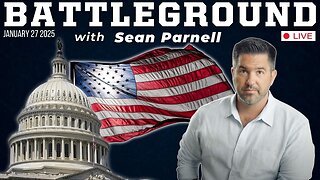 1:04:30
1:04:30
Battleground with Sean Parnell
9 hours agoPresident Trump Is Flooding The Zone
104K10 -
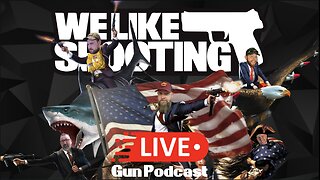 LIVE
LIVE
We Like Shooting
15 hours agoWe Like Shooting 595 (Gun Podcast)
151 watching -
 2:00:28
2:00:28
megimu32
4 hours agoON THE SUBJECT: 90s Toys, Fat Phobia, and Crying Libs!
15.9K2 -
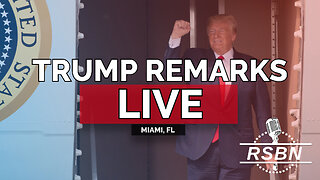 LIVE
LIVE
Right Side Broadcasting Network
12 hours agoLIVE REPLAY: President Trump Addresses House GOP in Doral, FL - 1/27/25
4,182 watching -
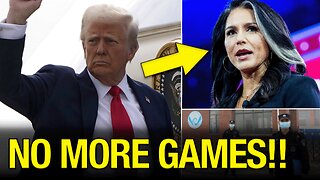 2:37:19
2:37:19
Robert Gouveia
6 hours agoTrump Addresses House Republicans; Tulsi Confirmation Fight; CIA Lab Leak
48.2K25 -
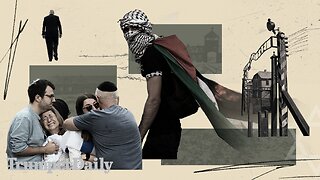 54:38
54:38
LFA TV
1 day agoMankind Refuses the Way of Peace | TRUMPET DAILY 1.27.25 7pm
42.6K3 -
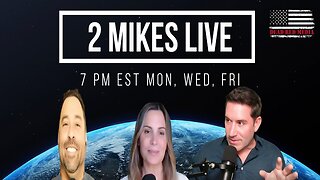 1:41:27
1:41:27
2 MIKES LIVE
8 hours ago2 MIKES LIVE #171 Deep Dive Monday!
27K1 -
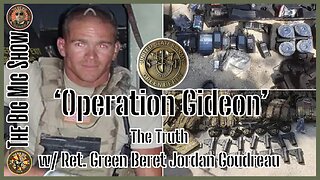 1:32:53
1:32:53
The Big Mig™
5 hours agoOperation Gideon, The Truth w/ Ret. Green Beret Jordan Goudreau
36.3K8